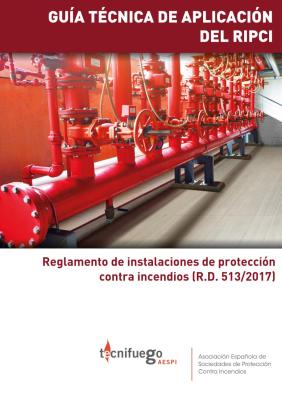

Main New Features of the New RIPCI Implementation Guide

Tecnifuego has prepared a report on the most significant changes (since its last revision in 2018) of the new Technical Guide for Application of the Fire Protection Installations Regulation, published by the Ministry of Industry. Find out what’s new.
TECNIFUEGO is the Spanish Association of Fire Protection Companies. Experts from each of its committees have prepared a report on the most significant changes (since its last revision in 2018) of the new Technical Guide for Application of the Fire Protection Installations Regulation (Royal Decree 513/2017, of 22nd May), published by the Ministry of Industry. The main new features are detailed below.
1. The inclusion of Royal Decree 298/2021, of 27th April, amending various industrial safety regulations.
2. CE Marking: includes the following (on responsibilities of market agents, page 16). Designers, installers and other agents must always ensure that the construction products they use have the CE mark correctly affixed, together with the Declaration of Performance (and also check that the declared performance is adequate) and the instructions and safety information.
3. Additional comments on 192005-2: Periodic Regulatory Inspections.
i) It reorganises the information about facilities whose specific regulations do not include periodic inspections: The CTE (Technical Building Code) for industrial installations prior to RD2267/2007 and other specific regulations (pages 36, 37 y 38).
ii) On the content of the inspections, it includes a paragraph citing UNE 19200-5:2021. To facilitate and align actions by inspection bodies, the following standard has been developed to address the content of these inspections: UNE 192005-2:2021, Procedure for Regulatory Inspection. Fire Safety. Part 2: Fire Protection Installations.
iii) For premises with special risks, it inserts the following paragraph:
“In cases where there are especially high-risk areas or premises, the periodic inspection shall be carried out in the area or premises (it is not necessary to carry it out for the rest of the building, provided that it is included in the exceptions under paragraph 2 and that it is also treated as a sector separate from the mentioned special high-risk area or premises). In all cases, when an area or premises has to be inspected, the installations linked to it shall also be inspected (for example, the water supply system that supplies the systems installed in that area, the installations on the escape routes linked to that area).”
4. - Minimum Maintenance of Fire Protection Installations. Section 10: Remote Connection to Maintenance Management Centres.
The entire content of the clarification is changed. It distinguishes between services associated with maintenance, for which EN 54-21 is not mandatory, and services for transmitting emergency alarms, for which EN 54-21 is mandatory (page 76, ANNEX II).
-Services Associated With Maintenance
These manage the information about FPE plants and systems to improve on-site maintenance (Tables I, II and III of Annex II) and manage breakdowns, assistance, and response by fire maintenance personnel. These services are provided by maintenance companies and can be provided using platforms that manage the required information. These platforms must guarantee good communication between units and comply with the necessary measures to maintain communications security. These systems are not intended to communicate alarms or emergency signals to emergency services (such as fire departments).
-Emergency Alarm Transmission Services
These are managed by fire alarm receiving centres which have personnel trained to handle and verify alarms and transmit them to the emergency services. The alarm transmission and fault warning equipment that these emergency alarm transmission services use must comply with the UNE-EN 54-21 standard and have the CE mark, as indicated in Annex I.
* The complete guide can be downloaded here: https://www.tecnifuego.org/comunicacion/nueva-guia-tecnica-de-aplicacion-del-reglamento-de-instalaciones-de-proteccion-contra




